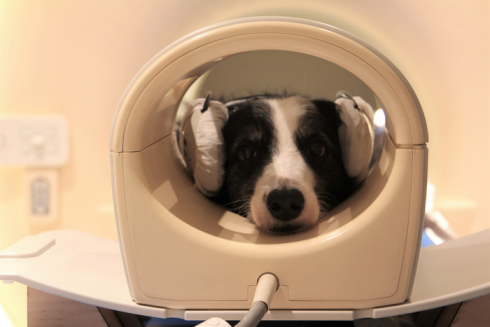A STUDY by researchers from Eotvos Lorand University in Hungary has demonstrated for the first time that a non-human brain can differentiate between two languages.
First author of the study Laura V. Cuaya was intrigued as to whether her Spanish ‘speaking’ dog would be able to tell the difference between Spanish and Hungarian when she moved to take up a job at the university from Mexico.

She explained: “Before, I had only talked to my dog Kun-kun in Spanish. So I was wondering whether he noticed that people in Budapest spoke a different language, Hungarian.
“So we designed a brain imaging study to find this out.”
She added: “Kun-kun and 17 other dogs were trained to lay motionless in a brain scanner, where we played them speech excerpts of The Little Prince in Spanish and Hungarian. All dogs had heard only one of the two languages from their owners, so this way we could compare a highly familiar language to a completely unfamiliar one. We also played dogs scrambled versions of these excerpts, which sound completely unnatural, to test whether they detect the difference between speech and non-speech at all.”
When comparing brain responses to speech and non-speech, researchers found distinct activity patterns in the dogs’ brains, regardless of the language used.
This proved that the animals can distinguish between speech and non-speech noise.
Dog brains could also distinguish between Spanish and Hungarian, with distinct activity patterns being detected in the dog’s brains.
The older the dog was, the better their brain distinguished between the familiar and the unfamiliar language.
READ MORE:
